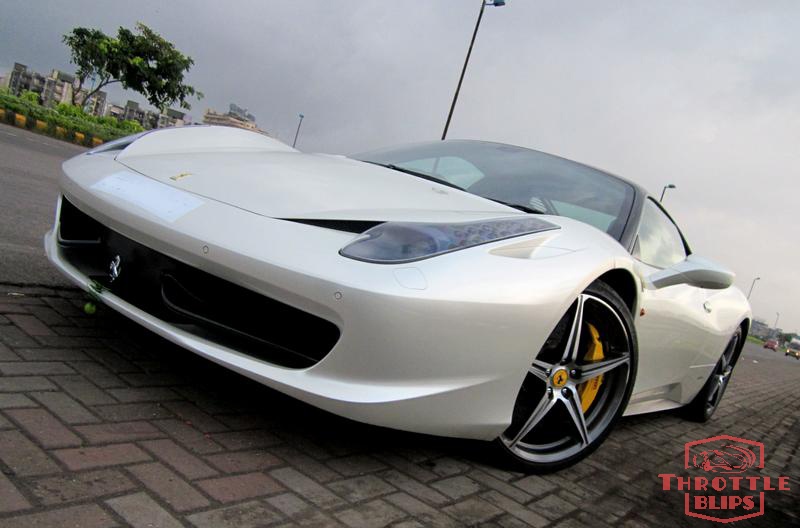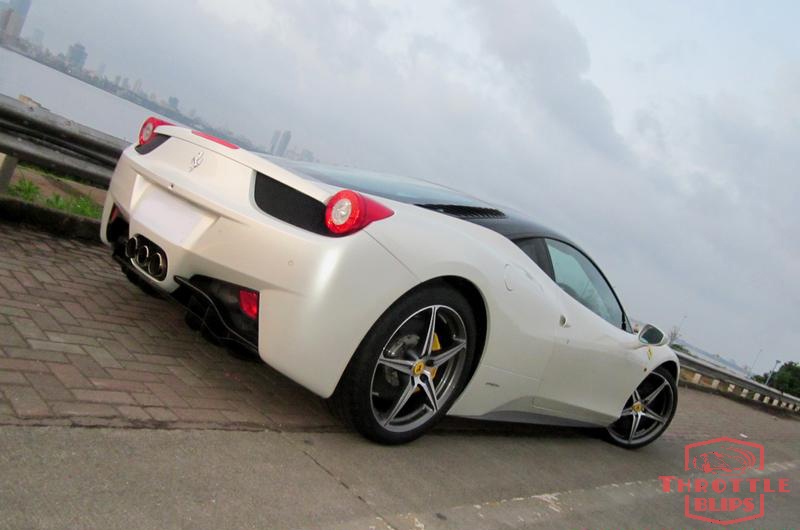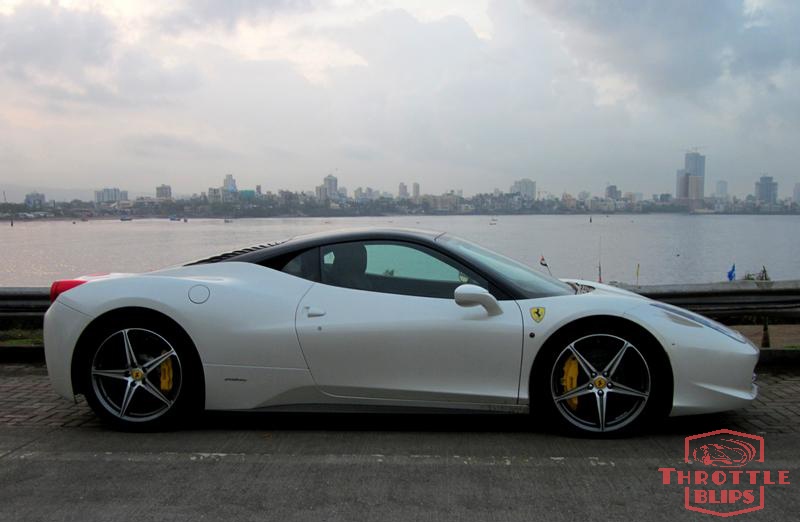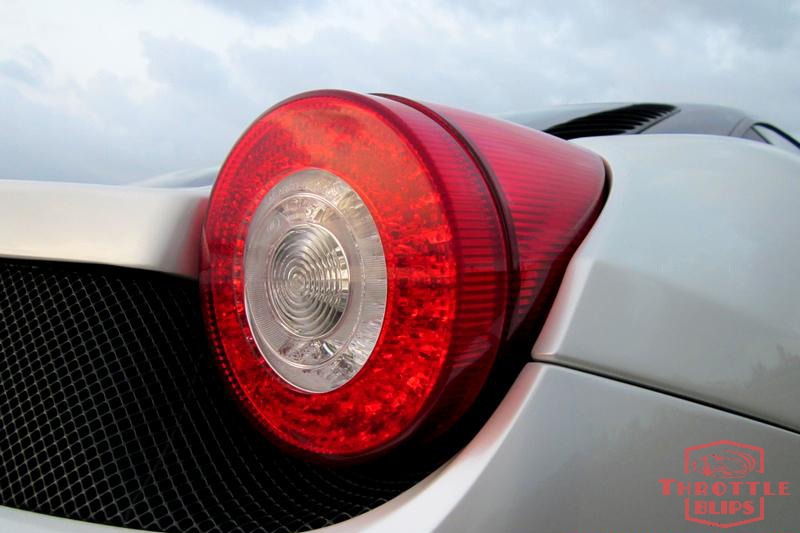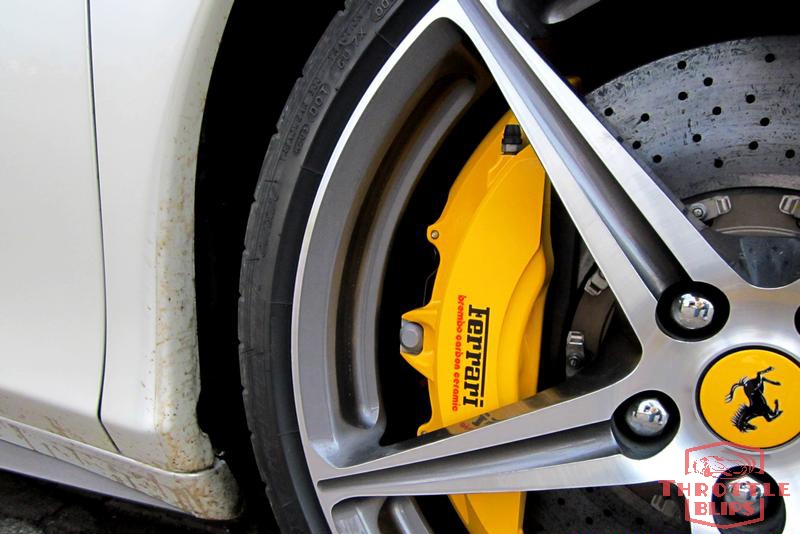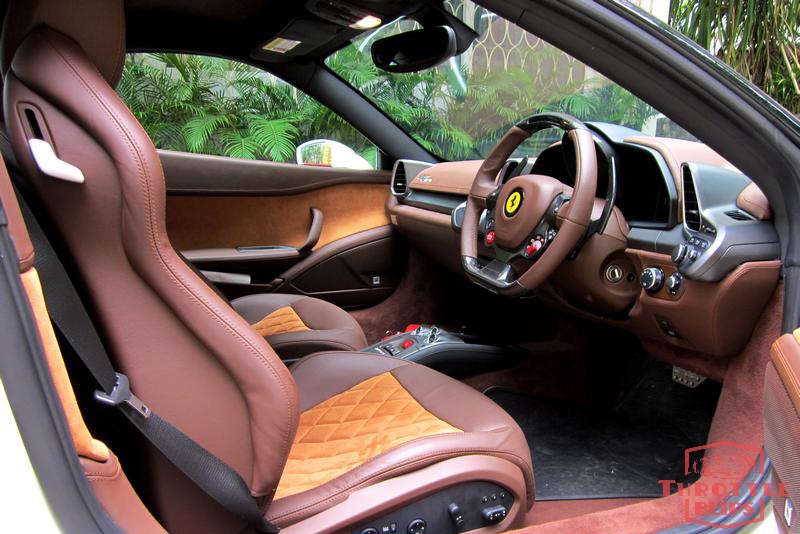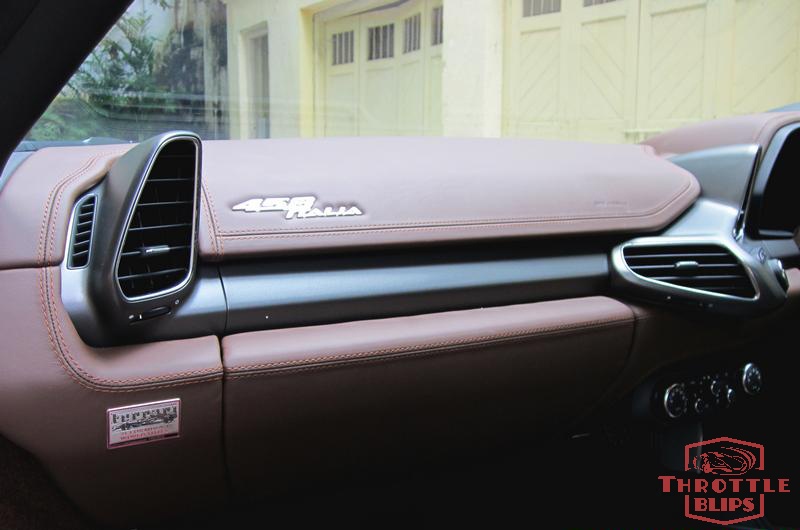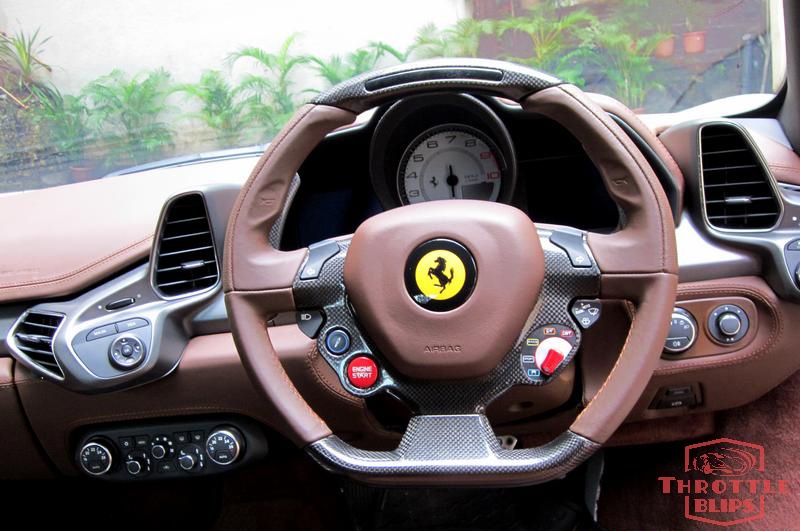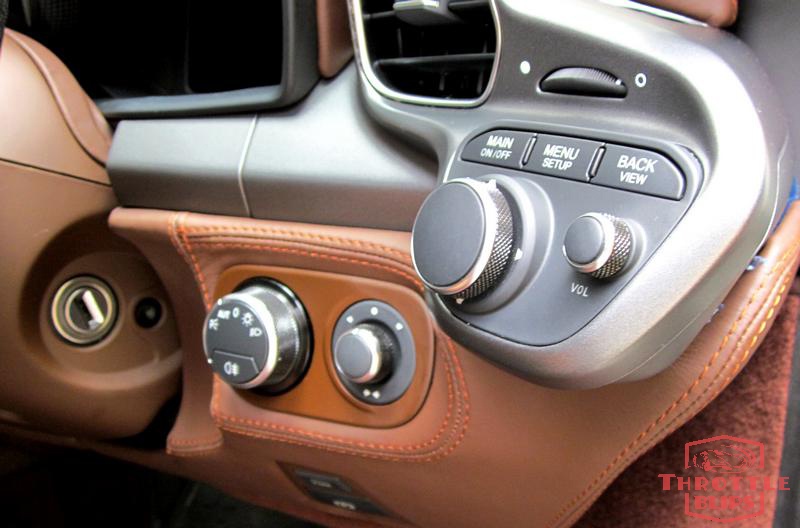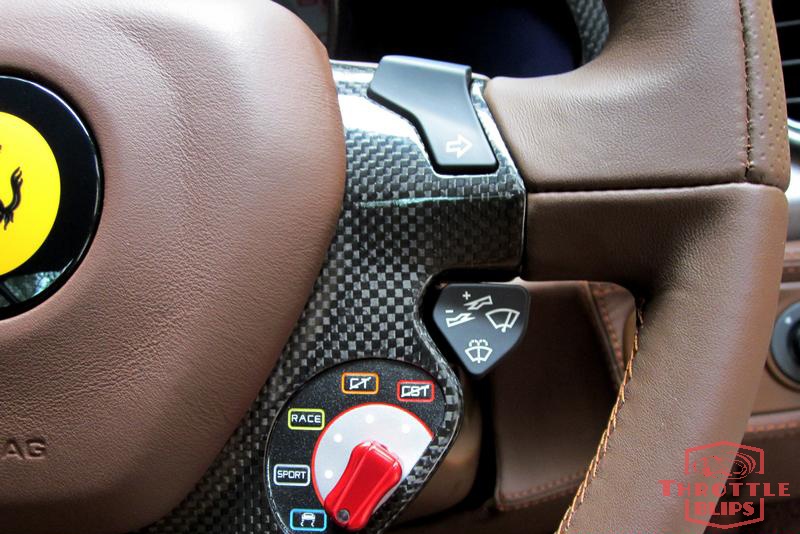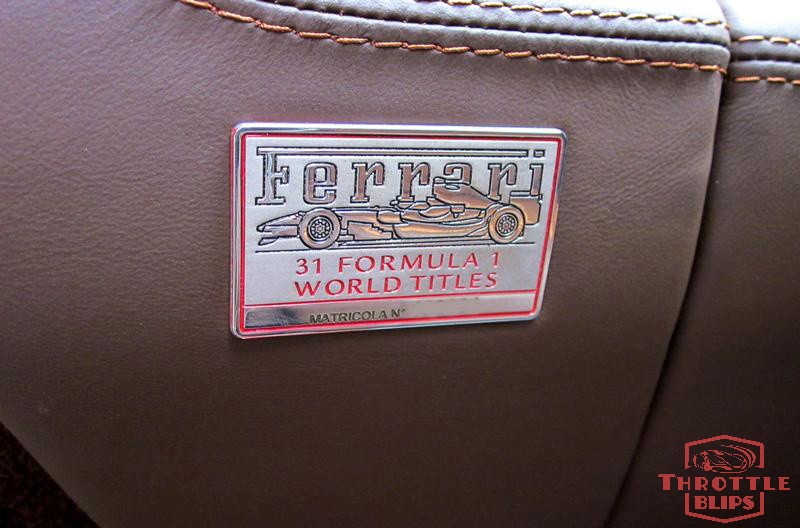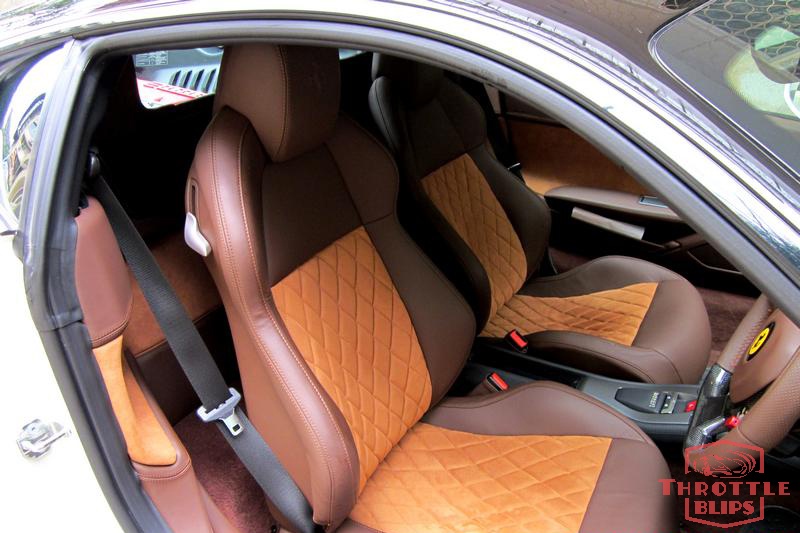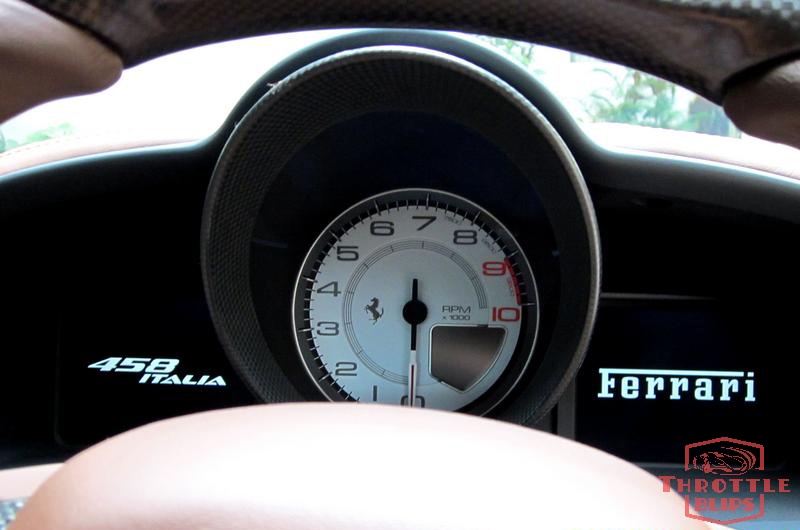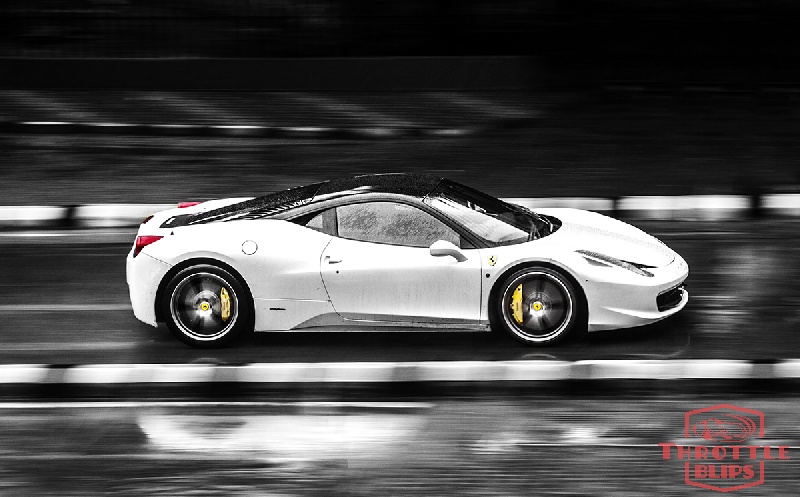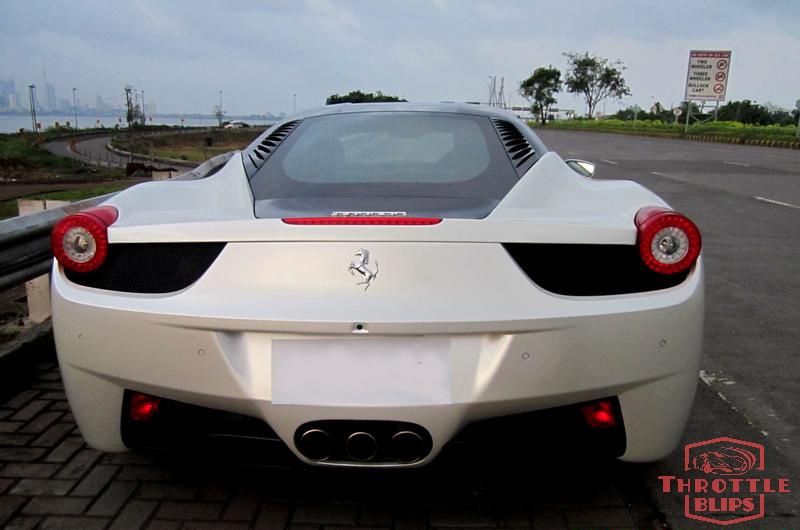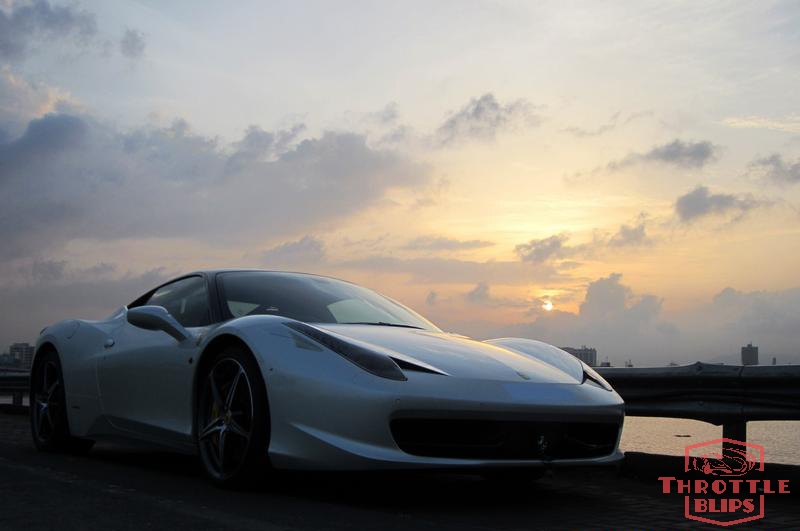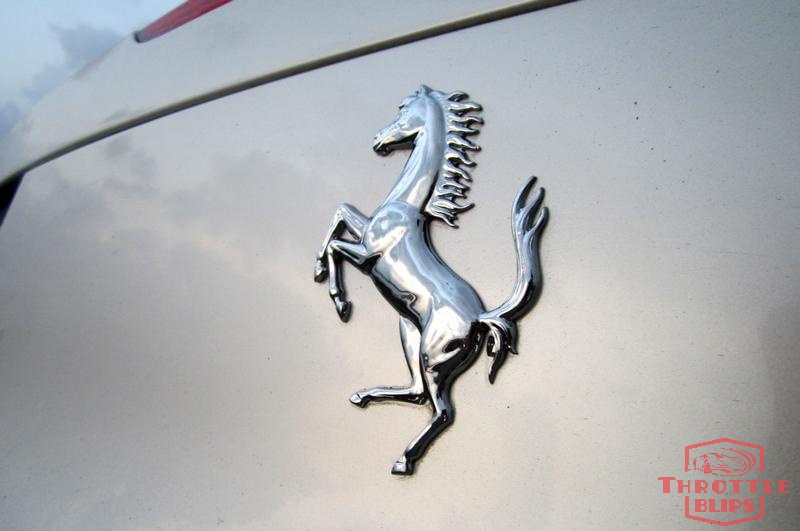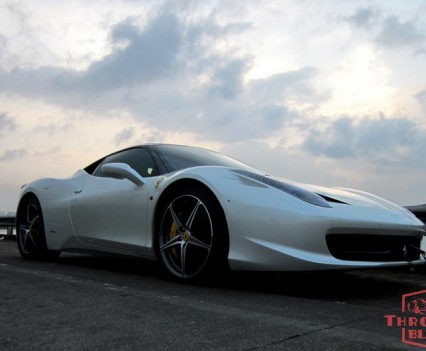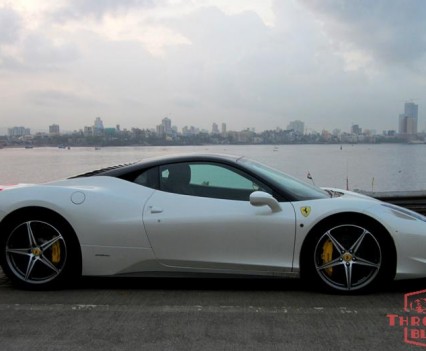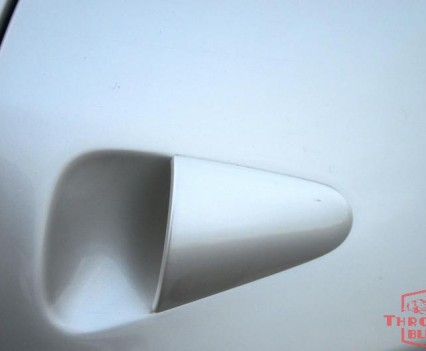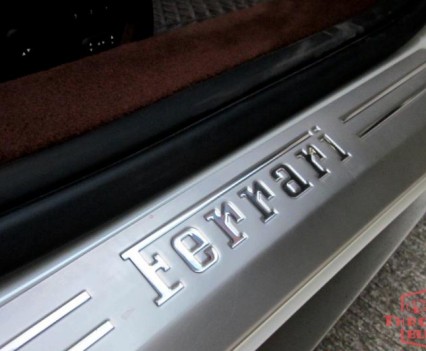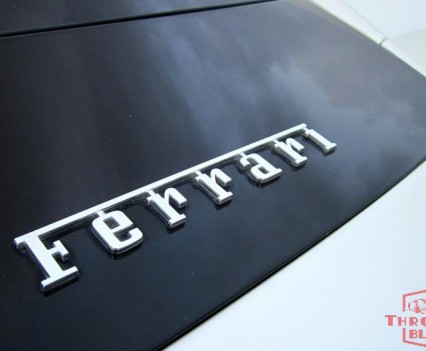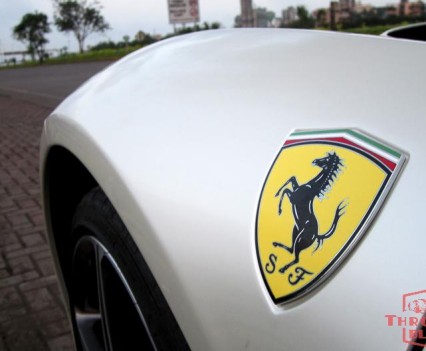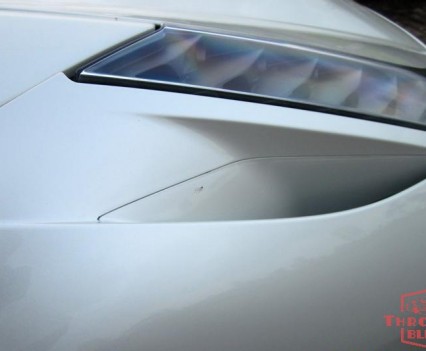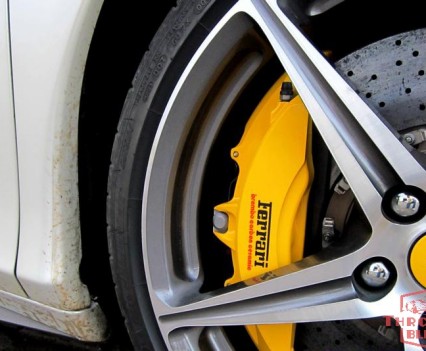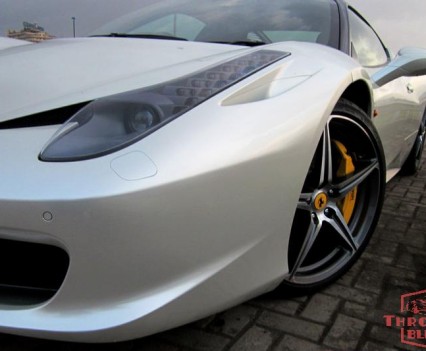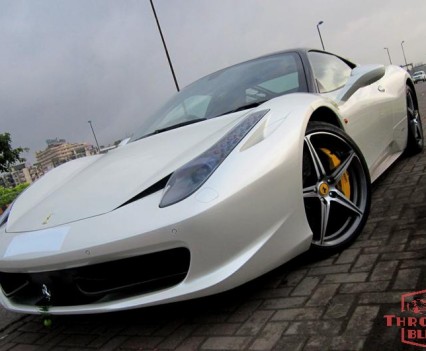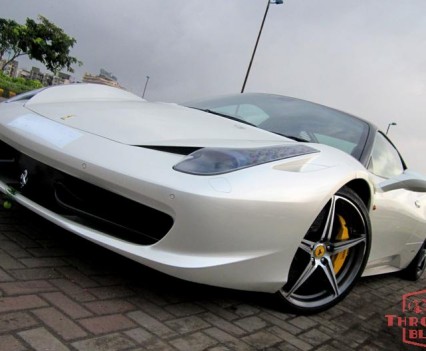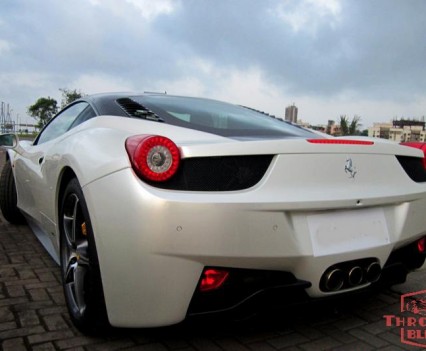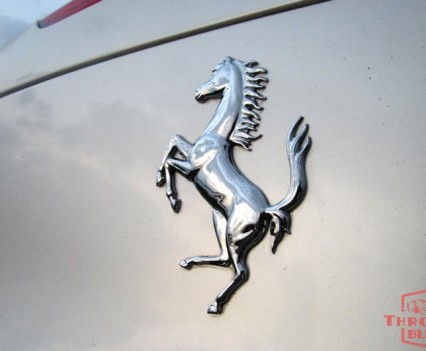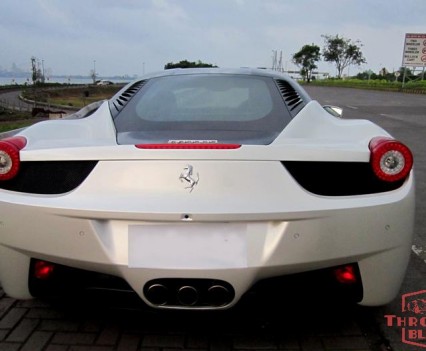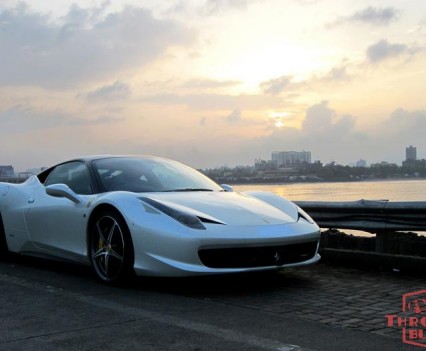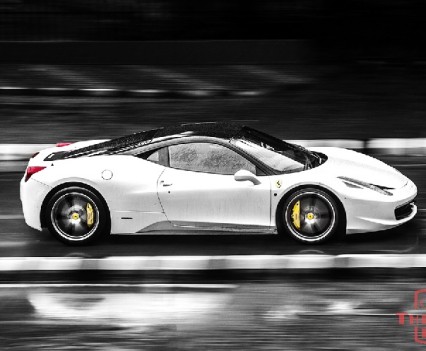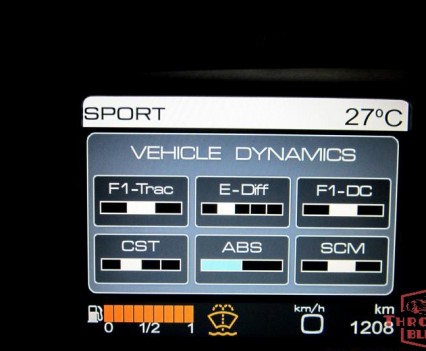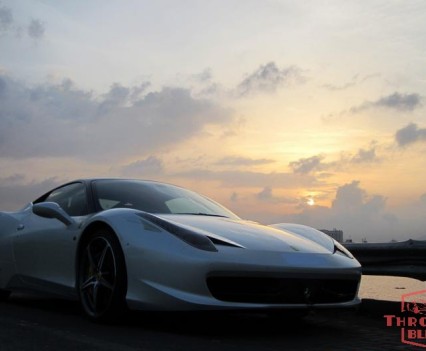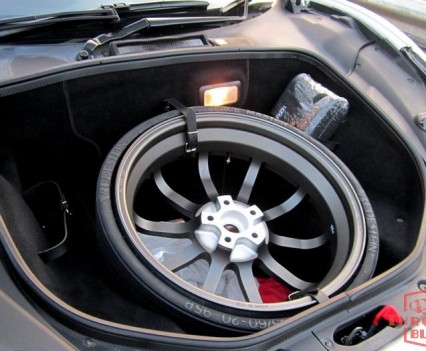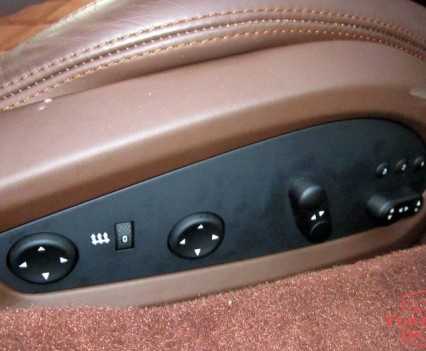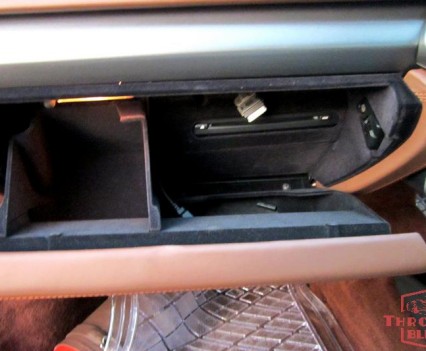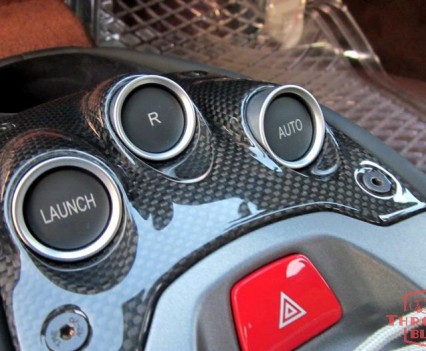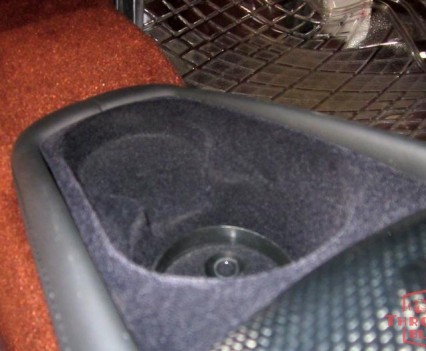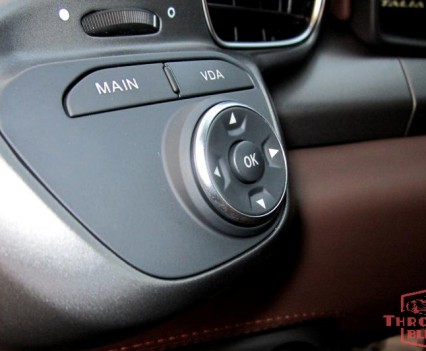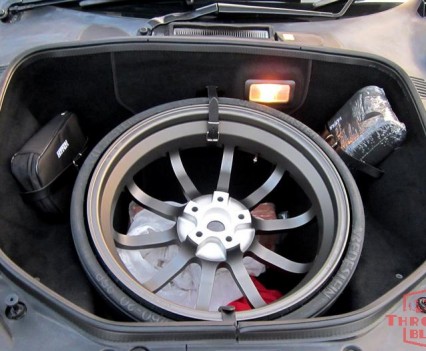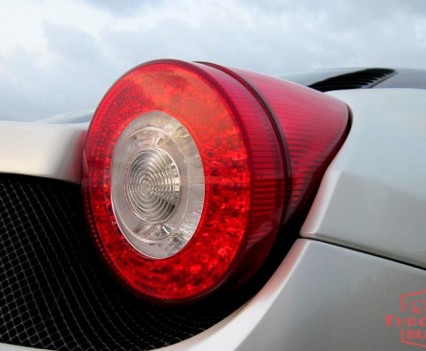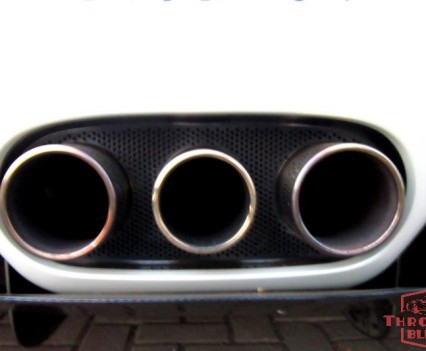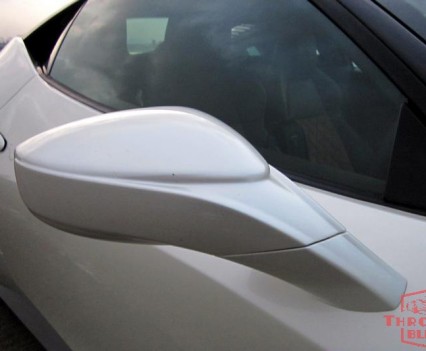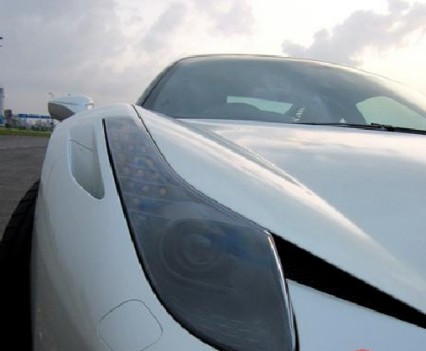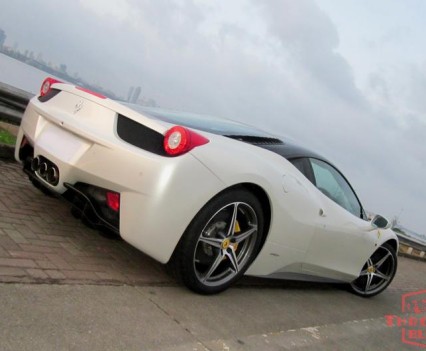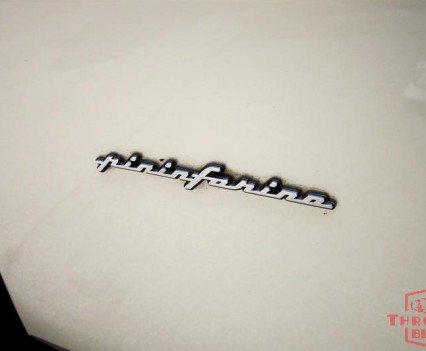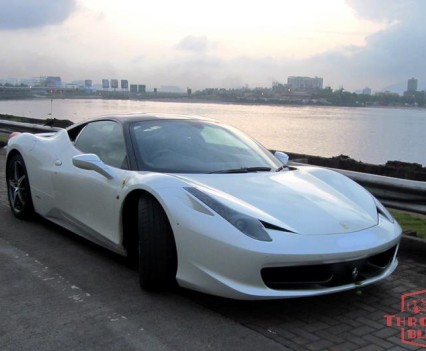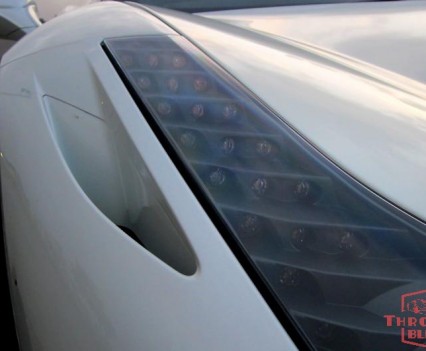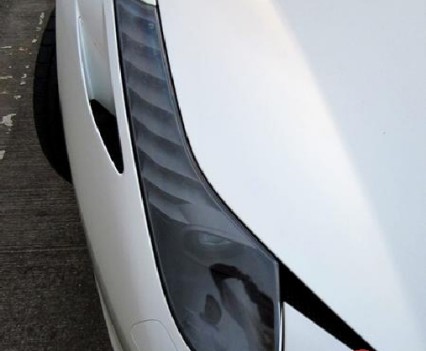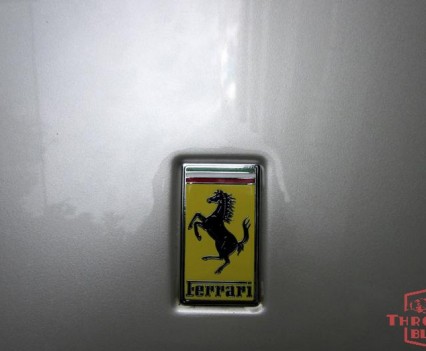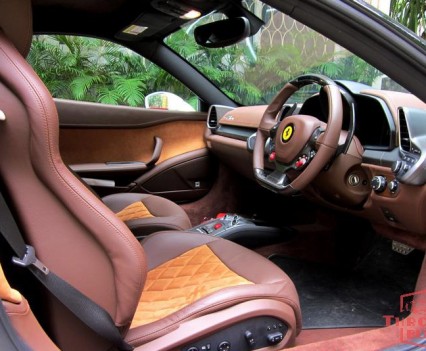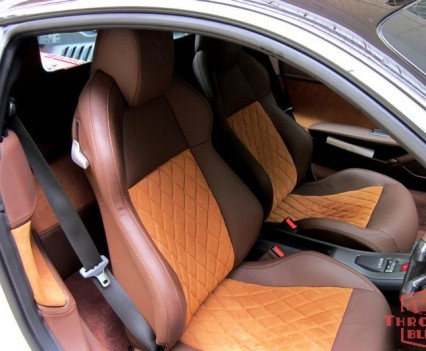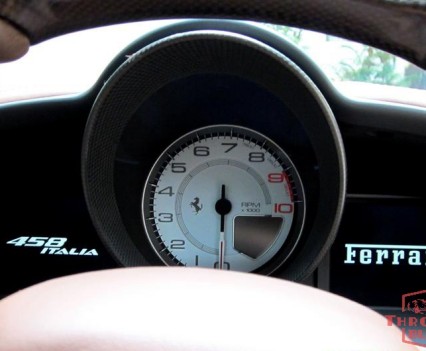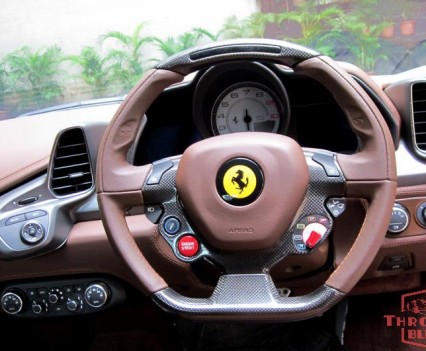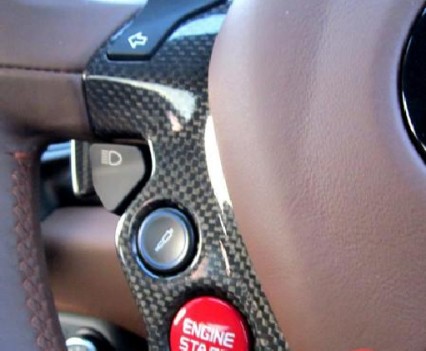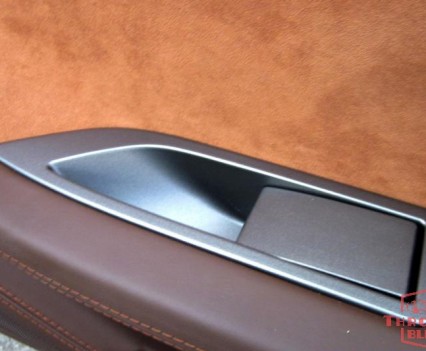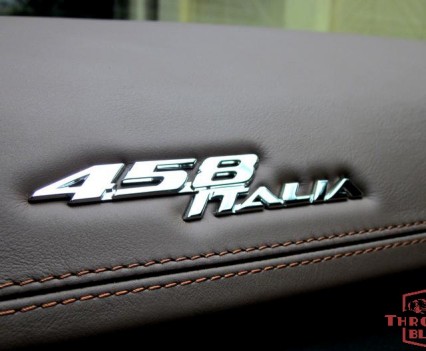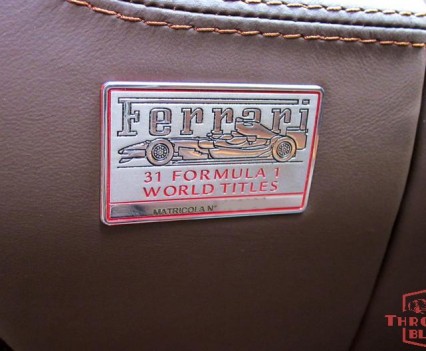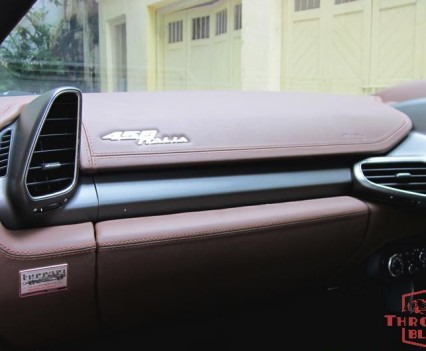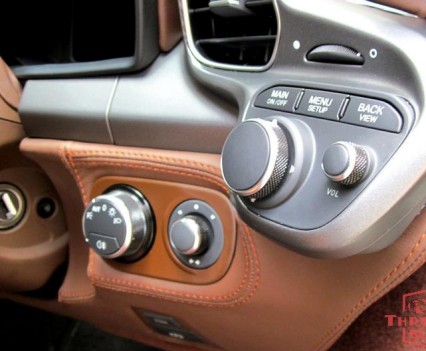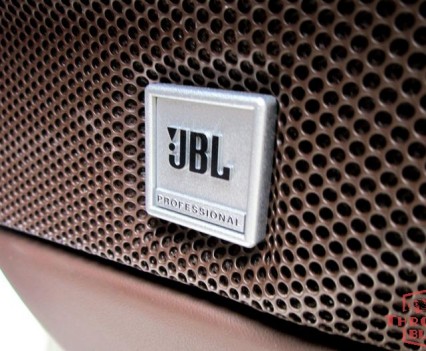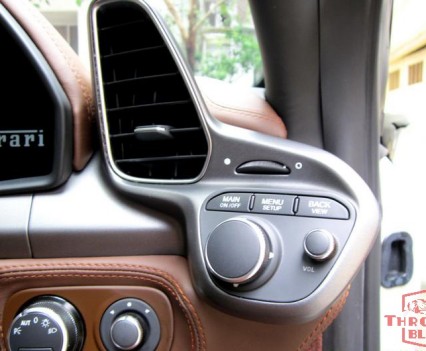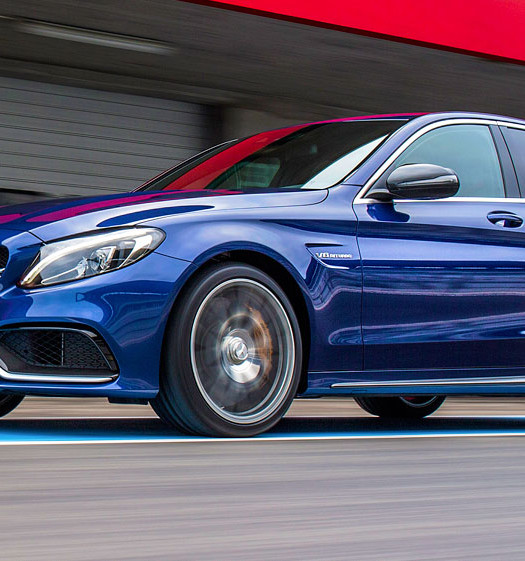The most difficult task for a super car maker has always been to make a better replacement for an already existing successful model. The F430 has been an immensely successful car for Ferrari since it was launched in 2004. The car found many buyers back home here in India as well making it a very popular Ferrari here. So when the spy pics of its replacement started surfacing all over the internet, everyone was keen to know what the new car was going to be like. Come September 2009 and Ferrari’s new V8 sportscar and the F430s successor was unveiled to the world at the Frankfurt Motor Show. The all new 458 Italia. So is the 458 a better car than its successful predecessor? I got my hands on one recently and came away really really surprised. For the good or the bad? Read on.
Though the 430 was not a bad looker at all, personally I always thought that its design and styling was a step carried forward from the 360 Modena that it replaced. The 458 is a completely new design from scratch by Ferrari. Styled by Pininfarina the new car does not have any styling similarities to the F430. A completely new design right out of the box, the 458’s looks seem to be showcase the Ferrari design philosophy for the next era. Aerodynamics have played a key factor in the 458s design as one can see. The front end sees sharp cuts in the bonnet design. No more curves here. The headlights are perfectly integrated with the flowing lines of the front fenders. Gone is the smiling look of the F430 and in its place the 458 comes with an aggressive and angry looking stance. Seeing those Daytime Running Lights (DRL) light up in the dark is a sight to behold. There are two flexible wings in the front bumper one on each side. When the car is going fast, these wings lower automatically allowing more air to flow from beneath the car giving it more downforce. There is also an air vent each next to each headlight but they are not there just for cosmetic reasons. According to Ferrari, there is a lot of high air pressure generated in the wheel wells when the car is going fast. These air vents allow the air from the wheel wells to flow out from above the car pushing it to the ground. Looks like the Ferrari wind tunnels were working overtime during the development of the 458. Just like the front, the rear gets all new treatment as well. The twin circular tail lights are replaced by a single round unit on each side. Unlike other previous Ferraris, the Italia gets triple pipe exhausts which are mounted right at the centre of the rear in between the rear diffuser. More on the exhausts later. The optional rear camera is mounted just above the number plate area. The classic glass engine bay cover revealing the glorious V8 remains unchanged from the F430. However the just launched 458 Spider loses it to accommodate the folding hard top roof. Coming to the dimensions the 458 has a wheelbase of 2650 mm which is 50mm more than that of the 430, its wider too at 1937mm (F430=1923mm). Kerb weight stands at 1485 kg.
Ferrari has various options for the exterior color which you can specify at the time of configuring your car. The car I drove comes with a very exclusive paint shade Bianco Fuji (Pearl White) as seen on the Maserati MC12. You can also go in for a two tone paint option. As you can see in the pictures this car has a black roof. The looks of the 458 has been a topic of debate with some loving it and others thinking otherwise. I for one admit that it seemed a bit weird in the pictures when it was unveiled but in the flesh it’s a different story altogether. After the 348 and my favourite 355, I thought Ferrari had lost the plot somewhere, but I feel that stands corrected with the Italia. I love it. However, my opinion not withstanding, the 458 design and styling will always a case of extremes… LOVE IT or HATE IT but you certainly cant ignore it.
Pull the door handle to open the door and the window rolls down approx 2 cm so that it doesn’t collide with the upper weather strip. Once you close the door, the window rolls up back again to its original position. The doors open wide, getting in is easy though getting out can take a little effort. Step into the interiors and you are welcomed with an interior unlike any other you have seen in a Ferrari before. The dash has been sculpted like a cockpit. The instrument cluster houses the big prominent tacho right in the centre. This can be ordered in any colour you like. The gear indicator display is also located in the tacho. 2 TFT screens one on either side of the tacho complete the layout. The right TFT screen shows a virtual analog speedometer, navigation and in car entertainment functions, while the left screen displays various info about the car like the temperature, fuel, and the mode your car is running in. A digital speedo is also displayed in the left TFT. Another highlight of the left TFT is that it has a Chronometer which you can use to record lap times if you are using the car on a track… Nice. Both the TFT screens can be controlled using controller knobs placed on either side of the steering wheel on the dashboard. They are pretty simple to operate and the menu navigation is easy.
The steering wheel of the Italia is a revelation and Im sure this pattern will make its way to the other Ferraris as well. Ferrari has done away with the stalks for the windshield wipers and the indicators. Instead, they have been incorporated on the steering wheel itself. The gear shift paddles are also more bigger in the 458. The horn buttons have been integrated into the top half of the steering wheel. That way, you can use the horn without having to let go of the steering. The indicator buttons on the steering feel convenient to use because of their placement. Just a light touch is all you need. To use the lane change function, simply hold down the indicator button for a couple of seconds, the indicator flashes 3 times and then goes off automatically. However I found the headlight flasher and wiper controls a handful to operate. They just don’t feel ergonomically correct. I started the wipers by mistake and took me a good 5 times to get them to switch off. The steering wheel also has the button for suspension settings, the Manettino (or drive mode control switch) and the engine start button. As an optional extra, Ferrari can give you Engine RPM LEDs on you steering wheel too for the complete F1 feeling . The steering wheel comes with height and telescopic adjust.
The centre console between the seats has the power window buttons and switches for Launch Control, Reverse and Automatic functions. You also find a cup holder as well. The door pockets are not that deep and can take only maybe small bits or toll tickets etc.. A 12V power socket also finds a place on the centre console The glove box is divided into two halves but is good for keeping your car documents and a few tit bits. The Ipod connector is located here as well. The button to open the glove box is on the centre console. The Italia comes with Automatic Climate Control and cools the cabin well even on a sunny day. The lever to open the engine bay is next to the driver’s seat . The quality however leaves quite a lot to be desired. The front boot can be opened by the button on the key itself or a switch inside the car. The Italia’s boot is quite deep. A space saver tyre is neatly placed in the centre along with the tool box.
Ferrari offers a variety of leather and Alcantara options for the upholstery and these can be customized right upto the colour of the seat stitching. All this can be configured and ordered in the ‘Personalization Programme’. The seats of the Italia are very comfortable and hold you perfectly in place. Under thigh support is great too. However it is interesting to note that the seats of the 458 have manual adjust. Fully electric seats with memory function and heating are an optional extra. Seat travel is good as is the height adjust which is beneficial for short drivers. The driving position is spot on. Racing seats are also available as an option.
So the Italia is almost as fast as the Enzo around the Fiorano circuit. How does it manage to do that? Well for starters it is the engine. The car comes with a 4.5 litre V8 unit. Extremely high revving, it produces 562 BHP @ a staggering 9000 rpm !!! Peak torque of 540 Nm is achieved at 6000 rpm. The madness starts right from the word go. Make yourself comfy in the driver’seat, turn the key and press the ENGINE START button on the steering. The car is always in P (Park) mode by default when starting up. The Italia roars to life and after a couple of seconds settles down to pretty silent idle something that you don’t expect from a super car. The “Manettino” drive mode control switch comes with 5 settings: Low Grip, Sport, Race, CT Off and CST Off. While Low Grip is the maximum safety mode and best to use on wet roads, Sport is perfectly suited for everyday driving . The last 3 modes are best used for the track and Ferrari does not recommend using these settings on normal roads. So adhering to the rule book, I decided to do this drive in Sport Mode only. Set the Manettino to Sport, pressed the AUTO button and I was good to go. I started off gently and at that time the engine sounded pretty docile but as soon as I touched 2500 rpm, in an instant the car transformed into a savage beast. The acceleration is nothing short of brutal and the way you are thrown back into the seat is insane. I admit that I was screaming in ecstasy when at the wheel.
The Italia has a 7 Speed dual clutch gearbox developed by Getrag. The presence of two clutches works wonders in the shifting department. Even in the auto mode you don’t experience any lag. All you need to do keep the throttle pedal pressed and the tranny does the gear changes in milliseconds before you can even blink an eye. No jerks at all. The old F430 did have slight jerks between gear changes. The sound of those 8 cylinders screaming behind from behind you is nothing short of orgasmic. A little more info now on the Engine RPM LEDs which are on the steering. The first LED comes on at reaching 5500 rpm, the rest light up in sequence when 6250, 7000, 7750 and 8920 rpm are reached… Even more addictive is the downshifting. Just a flip of the pedal behind the steering and you go down the gears. The traction control system keeps you in control at all times and the awesome E Diff balances the amount of torque distributed between the real wheels just perfectly. When standing still you can shift to neutral by pulling both the paddle shifters together. The 458 does the 0 – 100 kph dash in 3.4 seconds, quarter mile in 11.3 seconds and has a mind boggling top speed of 325 kph !! Though I could not do anything extreme in terms of trying out the handling, whatever I made out from the few moderately high speed turns I did, the steering is precise and the car just rockets out of turns and goes in exactly the direction you point it to bang on. Carbon ceramic brakes are standard on the 458. Braking distance from 100 – 0 kph is around 107 feet. Rear visilibilty is not bad either. While the reverse camera does its job well, I’m from the “I use only my mirrors when backing up” club. So honestly did not refer to the camera which was active in the TFT screen. The view from the glass engine cover is pretty impressive as well and you can see anyone who is approaching you from behind without having any surprises. The electrically adjustable ORVMs offer good visibility.
So is the 458 any good as an every day car? A big YES. Its astonishing as to how easy this car is to drive in normal traffic. Ferraris were always known as weekend cars but the Italia has changed everything. This is a Ferrari you can drive to work and back everyday without a care. As savage as it is, it will happily run around town in Auto mode in 7th gear at 2000 rpm doing 50 – 60 kph without a hiccup with the engine as silent as a normal every sedan and one would not have a clue to power lying within. The key to this is the exhaust. During this kind of cruising, only the valve of the centre pipe is open while the valves on the other two pipes open up once you hit the pedal and reach higher rpms. The ride quality is simply outstanding for a super car. The car’s suspension settings are fantastic. In comfort and sport mode there nothing of the stiffness you would other wise experience in such a car. The 458 takes uneven roads very well making it hard to believe that it is riding on 20 inch wheels. The car is shod with 235/35 ZR20 rubber at the front and 295/35 ZR20 at the rear. Ferrari offers a Front Suspension Lift system as an option on the 458. This raises the front of the car by 1.5 inches and can be activated and deactivated by a button on the centre console at speeds below 40 kph. This prevents the car from scraping speed breakers and other bad patches of road. Tried it quite a few times during the drive and it works like a charm. Even if you forget to deactivate it after you cross the speed bump, it will automatically lower itself once you cross 40 kph while driving. Excellent.
The 458 Italia is one of Ferrari’s finest engineered cars. Sure it had the initial fire problems but Ferrari was quick to rectify them. The 458 is more user friendly, more easy to drive than its predecessor the F430 (I have driven one briefly earlier) and will not complain even if you are stuck in traffic. At the same time it gives you performance that is close to the mighty Enzo and that itself says something about what Ferrari have done. Here is one Prancing Horse that is as happy in the city as it would be on a track. Yes it is much much more expensive especially with the kind of options it has and can no longer be called the true entry level Ferrari, the California has that title now. But then somethings in life are just wanted at any cost and the Ferrari 458 Italia is surely one of them. The Italia will go down in Ferraris history as a golden chapter and is a turning point for the marque from Maranello. Do I want one? Hell yes I do. It is just EPIC.
Check out our detailed photo gallery:


